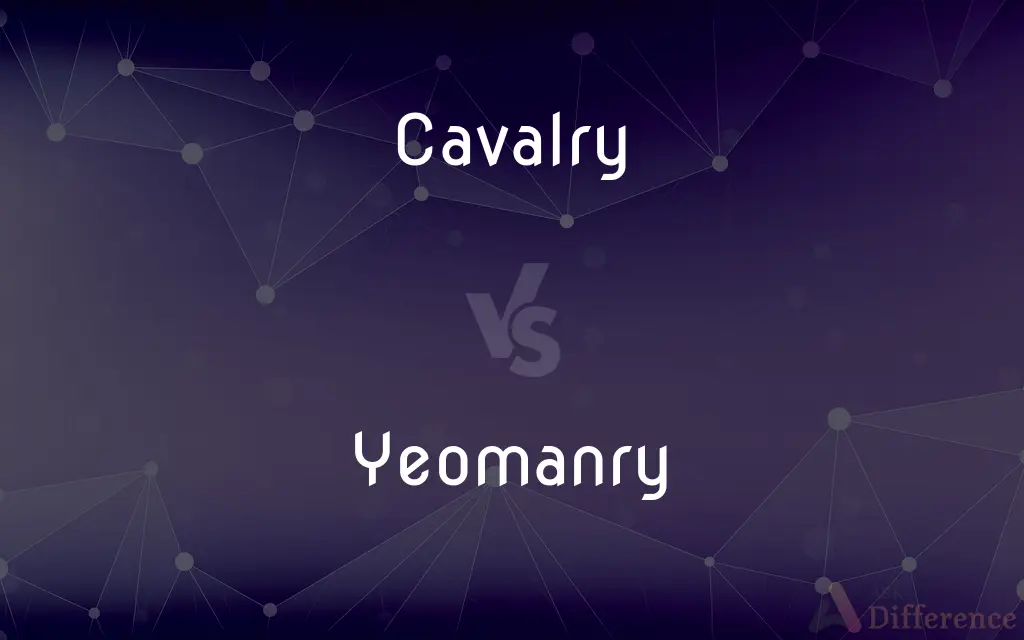Cavalry vs. Yeomanry — What's the Difference?

Difference Between Cavalry and Yeomanry
ADVERTISEMENT
Compare with Definitions
Cavalry
Historically, cavalry (from the French word cavalerie, itself derived from "cheval" meaning "horse") are soldiers or warriors who fight mounted on horseback. Cavalry were the most mobile of the combat arms, operating as light cavalry in the roles of reconnaissance, screening, and skirmishing in many armies, or as heavy cavalry for decisive shock attacks in other armies.
Yeomanry
Yeomanry is a designation used by a number of units or sub-units of the British Army Reserve, descended from volunteer cavalry regiments. Today, Yeomanry units serve in a variety of different military roles.
Cavalry
(in the past) soldiers who fought on horseback
The cavalry charged up the hill
The army numbered around 100,000 cavalry
Yeomanry
The class of yeomen; farmers of small freeholds.
Cavalry
Troops trained to fight on horseback.
ADVERTISEMENT
Yeomanry
A British volunteer cavalry force organized in 1761 to serve as a home guard and later incorporated into the Territorial Army.
Cavalry
A highly mobile army unit using vehicular transport, such as light armor and helicopters.
Yeomanry
(historical) A class of small freeholders who cultivated their own land.
Cavalry
The military arm of service that fights while riding horses.
Yeomanry
A British volunteer cavalry force organized in 1761 for home defense and later incorporated into the Territorial Army.
Cavalry
An individual unit of the cavalry arm of service.
Yeomanry
The position or rank of a yeoman.
Cavalry
The branch of the military transported by fast light vehicles, also known as mechanized cavalry.
Yeomanry
The collective body of yeomen, or freeholders.
The enfranchised yeomanry began to feel an instinct for dominion.
Cavalry
(figurative) Source of rescue, especially in an emergency.
Call in the cavalry
Yeomanry
A British volunteer cavalry force, growing out of a royal regiment of fox hunters raised by Yorkshire gentlemen in 1745 to fight the Pretender, Charles Edward; - calle dalso yeomanry cavalry. The members furnish their own horses, have fourteen days' annual camp training, and receive pay and allowance when on duty. In 1901 the name was altered to imperial yeomanry in recognition of the services of the force in the Boer war. See Army organization, above.
Cavalry
That part of military force which serves on horseback.
Yeomanry
Class of small freeholders who cultivated their own land
Cavalry
Troops trained to fight on horseback;
500 horse led the attack
Yeomanry
A British volunteer cavalry force organized in 1761 for home defense later incorporated into the Territorial Army
Cavalry
A highly mobile army unit
Share Your Discovery

Previous Comparison
Probably vs. Certainly
Next Comparison
Peaceful vs. Restful















































